Bauman Wants 1.5 Percent Sales Tax
Additional funding would be dedicated to transit service, end what the alderman calls a "death spiral"
Alderman Robert Bauman wants to see the proposed Milwaukee County sales tax expanded to provide dedicated funding for mass transit service.
“My proposal would be you increase this to a 1.5 percent sales tax and you add a half cent for transit,” said Bauman Thursday morning at a meeting of the city’s Public Transportation, Utilities and Waterways Review Board.
But the alderman said the proposal as it stands today is too complicated for the average voter and, even if the Republican-controlled Legislature allows it to go to referendum, will fail. “That is a guaranteed recipe for defeat,” said Bauman of a long ballot question.
Bauman invited Wisconsin Policy Forum President Rob Henken and Southeastern Wisconsin Regional Planning Commission Executive Kevin Muhs to present on the state of the region’s mass transit network and help establish his case for dedicated funding.
Henken provided an update on a 2008 report that dictated the dire financial facing the Milwaukee County Transit System (MCTS). “It just remarkable how the problems we identified, the structural issues that were very pressing then, are essentially the same issues we find ourselves facing today,” said Henken.
“The problem in a nutshell for [MCTS] is that it has certain fixed costs, over which it does not have a great deal of control, that are going up, sometimes greater than inflation and it has revenue streams that are not going up,” illustrated Henken with a series of graphs. “We now have to consider whether this day of reckoning is once again upon us.”
MCTS proposed significant service cuts for 2020, including all Freeway Flyers, shuttle service to festivals and a number of fixed routes. But those cuts will be partially avoided by $4 million in savings from county employee health care costs according to a statement last week from Milwaukee County Executive Chris Abele. The executive is scheduled to unveil his budget next week.
Henken said that the issue will only get more difficult in coming years. “This capital issue is now perhaps eclipsing the operating budget problem,” said Henken of the county’s funding needs. The county, due to the use of one-time federal funding to replace 261 buses in the past decade, will soon have a need to replace a large percentage of its more than 400 buses and already has growing needs for other capital projects, including replacing its public safety building.
“Essentially it’s now up to the cash strapped county to find funding or cut services,” said Henken.
At the same time Henken’s non-partisan Wisconsin Policy Forum continues to analyze government spending, funding needs and revenue sources, SEWRPC continues to chart a course for the future.
The organization produces a long-range plan for land use and transportation for the region every ten years, with the most recent installment coming as VISION 2050 in 2016.
“We’re basically recommending slightly more than doubling transit within the larger region and a substantial amount of that within Milwaukee County,” said Muhs.
That regional plan, if fully implemented with commuter rail lines, bus rapid transit and other transportation improvements, would cost $170 million annually said Muhs. That amount exceeds the $160 million annually Milwaukee County and its 19 municipalities hope to raise from the one percent sales tax, but SEWRPC’s vision goes beyond Milwaukee County to include the seven-county area.
“There are substantial portions of the improvements that could be accomplished at much lower levels [of funding],” said Muhs.
But finding that right level has long been a problem for Milwaukee. Muhs told the board that there are only four other peer cities in the country that don’t have a dedicated funding source for transit: Norfolk and Richmond in Virginia and Memphis and Nashville in Tennessee. But that list could soon get shorter, Nashville has been given state authority to hold a binding referendum to enact a transit sales tax. Detroit, which Muhs said isn’t a peer to Milwaukee because the region is much larger, is in a similar situation.
Still MCTS remains a cost-effective operation, albeit a shrinking one. “MCTS is one of the most efficient systems when it comes to cost per revenue hour,” noted the transportation planner. Muhs said MCTS also provides 50 percent more service than the next largest transit system without dedicated funding.
Bauman took a pessimistic view of the current state. “We’re basically in a death spiral,” concluded the transit advocate of declining ridership, fewer routes and aging equipment.
“Why should we put more money into transit if people are voting with their feet, apparently?” asked the alderman. “Do we really need to expand transit service by several orders of magnitude if people are using less transit?”
Muhs said the decline in ridership follows the decline in service. “The service has become less useful over time as we have lost service hours,” said Muhs. He said other short term trends are being studied including the rise of transportation network companies like Uber and Lyft and sustained low fuel prices.
He singled out Seattle as a city that is growing ridership alongside a growing city.
“No we haven’t found a smoking gun that transit equals growth, but what it is is part of an amenity package in a growing,” concluded Muhs.
Henken, who originally moved to Milwaukee to work on a regional light rail proposal, framed the local transit situation as “limping along.”
“When the question going into every year is what we are going to cut, you don’t think about investing,” said Henken. “That’s not a criticism. That’s a very understandable fact of life.”
A proposed one-percent sales tax to fund property tax relief and government services in Milwaukee County and the county’s 19 municipalities was unanimously endorsed by the chief executive of each entity at the September meeting of the Milwaukee County Intergovernmental Cooperation Council.
Bauman was critical of how the deal came together, including the lack of public acknowledgment of transit needs. “All the people meeting about this drove there,” said the alderman. He said without transit funding enshrined in the legislation, the death spiral would continue. “I’m an absolute no vote on this sales tax as its currently structured.”
Due to state law, the sales tax proposal would first need to be approved by the Wisconsin State Legislature. The Milwaukee County proposal currently calls for a binding referendum to enact the tax. More details on the package can be found in the articles below.
If you think stories like this are important, become a member of Urban Milwaukee and help support real independent journalism. Plus you get some cool added benefits, all detailed here.
More about the 1 Percent Sales Tax Proposal
- The State of Politics: The Debate Over Local Sales Taxes - Steven Walters - Feb 22nd, 2021
- Evers’ Budget Proposal Would Allow Milwaukee Sales Tax - Jeramey Jannene - Feb 12th, 2021
- WCA Applauds Governor Evers’ Sales Tax Option - Wisconsin Counties Association - Feb 12th, 2021
- MMAC Encourages Support for Evers Sales Tax Proposal - Metropolitan Milwaukee Association of Commerce - Feb 12th, 2021
- Gov. Evers Proposes Plan to Enhance Local Control, Bolster Local Communities’ Economic Recovery - Gov. Tony Evers - Feb 12th, 2021
- The State of Politics: Milwaukee Leaders Plead for 1% Sales Tax - Steven Walters - Mar 16th, 2020
- County Sales Tax Legislation Gets Hearing - Graham Kilmer - Mar 5th, 2020
- ‘Fair Deal’ Sales Tax Referendum Blocked From April Ballot - Corrinne Hess - Jan 30th, 2020
- Transportation: Bauman Wants 1.5 Percent Sales Tax - Jeramey Jannene - Sep 26th, 2019
- Review Board to Discuss Recent Sales Tax Proposal and its impact on Public Transit - Ald. Bob Bauman - Sep 23rd, 2019
Read more about 1 Percent Sales Tax Proposal here
Transportation
-
MCTS Adds 28 New Buses
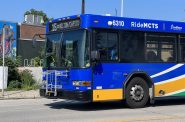 Jul 13th, 2024 by Graham Kilmer
Jul 13th, 2024 by Graham Kilmer
-
MCTS Designing New Bus Shelters
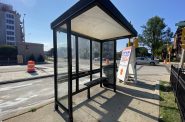 Jul 10th, 2024 by Graham Kilmer
Jul 10th, 2024 by Graham Kilmer
-
MCTS Updates RNC Bus Detours To Better Serve Downtown, Riders
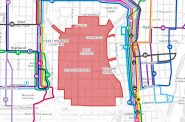 Jul 9th, 2024 by Jeramey Jannene
Jul 9th, 2024 by Jeramey Jannene


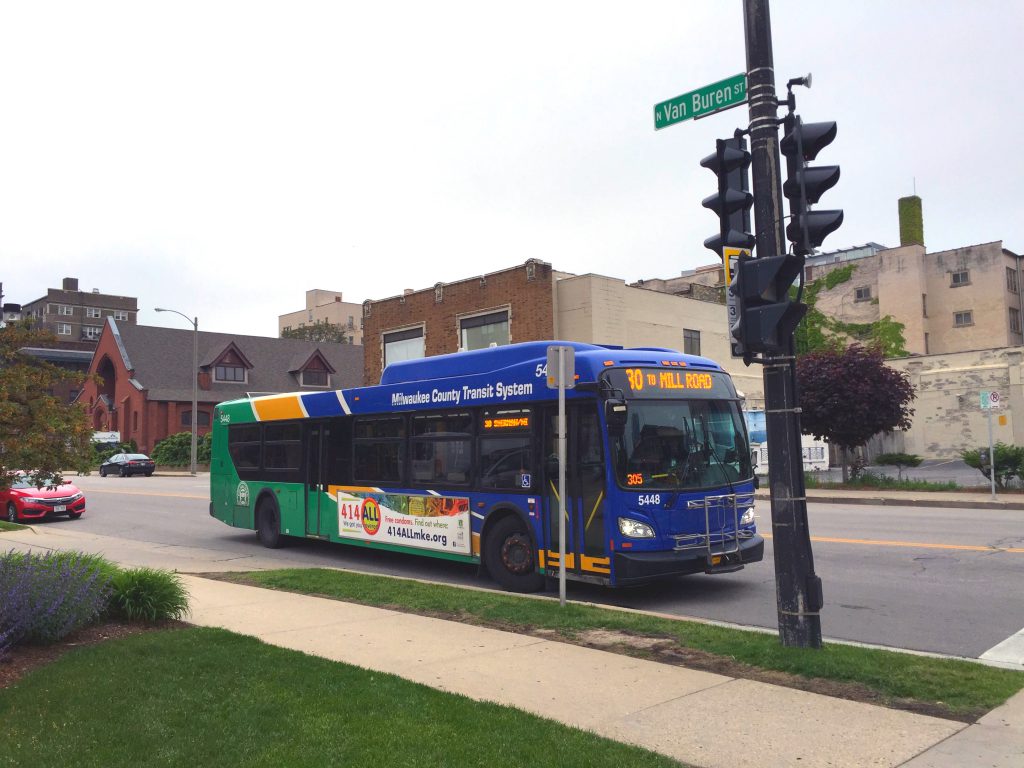










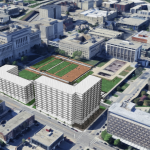









Was there discussion as to the carbon emissions and air quality impact of transit on the Southeastern Wisconsin area? Focusing on funding is an obvious priority, but looking to the long-term quality of life-type benefits is important too.
“Due to state law, the sales tax proposal would first need to be approved by the Wisconsin State Legislature.”
This is just one of the over 100 measures that were enacted by Walker and the Tea Party legislature that stripped local governments of local control.
That specific restriction actually predates Walker’s time as governor.
We need more and better public transportation in this city: more bus lines, more HOP lines … If that takes a 1,5% sales tax, go for it. We must get some of these SUV’s and SUPER SIZED TRUCKS off our streets, They are strangulating our city streets.